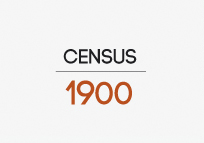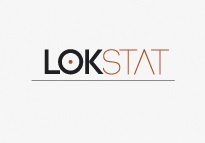




BELGIAN SOCIETY IN HISTORIC CENSUSES
Industrial census 1896
Aim and organisation of the census
The initiative to organise a census came from the Ministry of Industry and Labour; for the preparations it was assisted by the Central Commission for Statistics. The census itself was in the hands of the Ministry. It was executed by the municipalities and the provincial administration.
The census addressed businesses where the company director and/or his paid employees 'carry out the movement, manipulation or implementation of any commodity' on behalf of consumers. In keeping with this definition, transport was included in the census. By contrast, farming and purely commercial activities were excluded. In addition, several borderline cases were expressly excluded: repairing goods as a commercial activity, companies that provided services (such as maintaining roads and lighting street lanterns) and certain activities in the agricultural sector (such as retting flax and drying tobacco) including activities that were only executed as an exception in an industrial manner (such as dairy farms). The above-mentioned definition also implies that institutions where goods were produced for internal use or where the personnel were not paid (such as prisons, monasteries, convents, lace schools, leather schools, etc.) had to be excluded. Moreover, companies that worked exclusively for the state were not counted (e.g. Manufacture royale de canons de Liège).
The communicated information served to describe the situation on 31 October 1896. The organisers of the census preferred October because most industries were active at that time. The seasonal character of certain industries meant that it was impossible to find a date when all companies were operating. Furthermore, the chosen date had some symbolism. The first industrial census in independent Belgium took place in October fifty years prior.
The information served to describe the situation on the date of the census. It was a snapshot in time. In the event of unemployment on that day, the communicated information could be related to a normal working situation.
The Royal Decree of 22 July 1896 established that the census would consist of two parts:
1 A census of the industries and handicrafts (category A).
2 A census of the families in which one or more members worked as industrial labourers (category B).
Fixed forms were provided per category; the data had to be registered on those forms.
The data of the first part were collected per enterprise. The head of every industrial company had to fill in forms that requested information related to the type of company, the number of employees, the wages, the working hours, the produced products, the steam engines and the motors. If a company was active in several of the distinct branches of industry or had several departments then the head of the company had to split the information according to type of activity or department and register this information on separate forms. Identification of the industrial bosses was based on the municipal register by municipal clerks.
Every municipality had to appoint one or more agents who distributed, collected and checked the census forms. Their appointment had to be approved by the governors. Census agents were only allowed to take charge of maximum 50 companies. They received compensation for their work (20 centime to 2 frank depending on the size of the companies) per completed form.
The information related to category B involved family composition, gender, age, place of birth and place of residence and place of employment of the workers in the various industries. They were also collected by the above-mentioned census agents. Every agent had to complete the data on the forms after consulting the municipal register and after visiting the place where the workers stayed. They received compensation of at least 5 centime per completed and checked form.
- Aim and organisation of the census
- Processing the results
- Publication of the results
- Source criticism
- Content of the internet tables
- Concepts